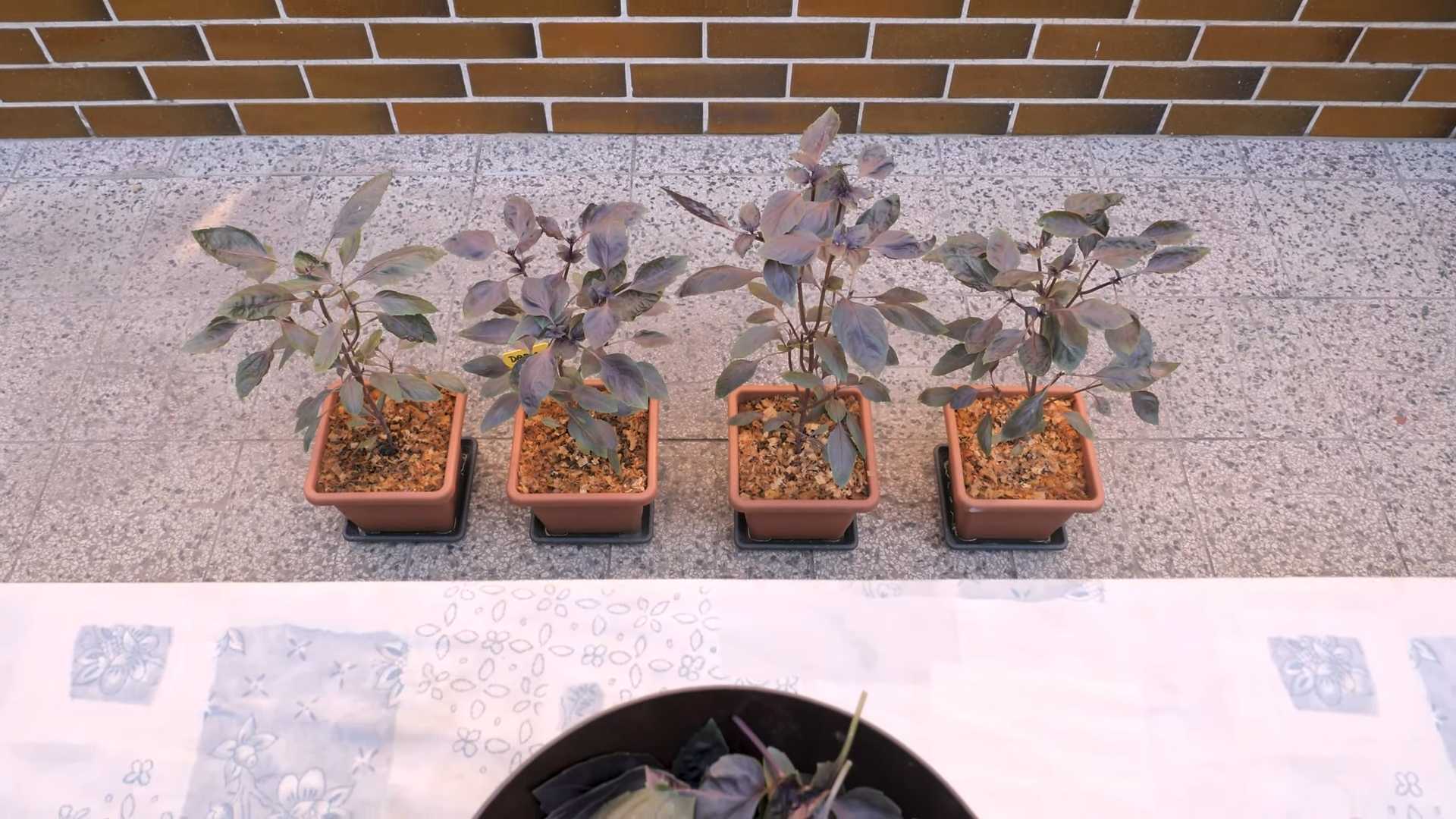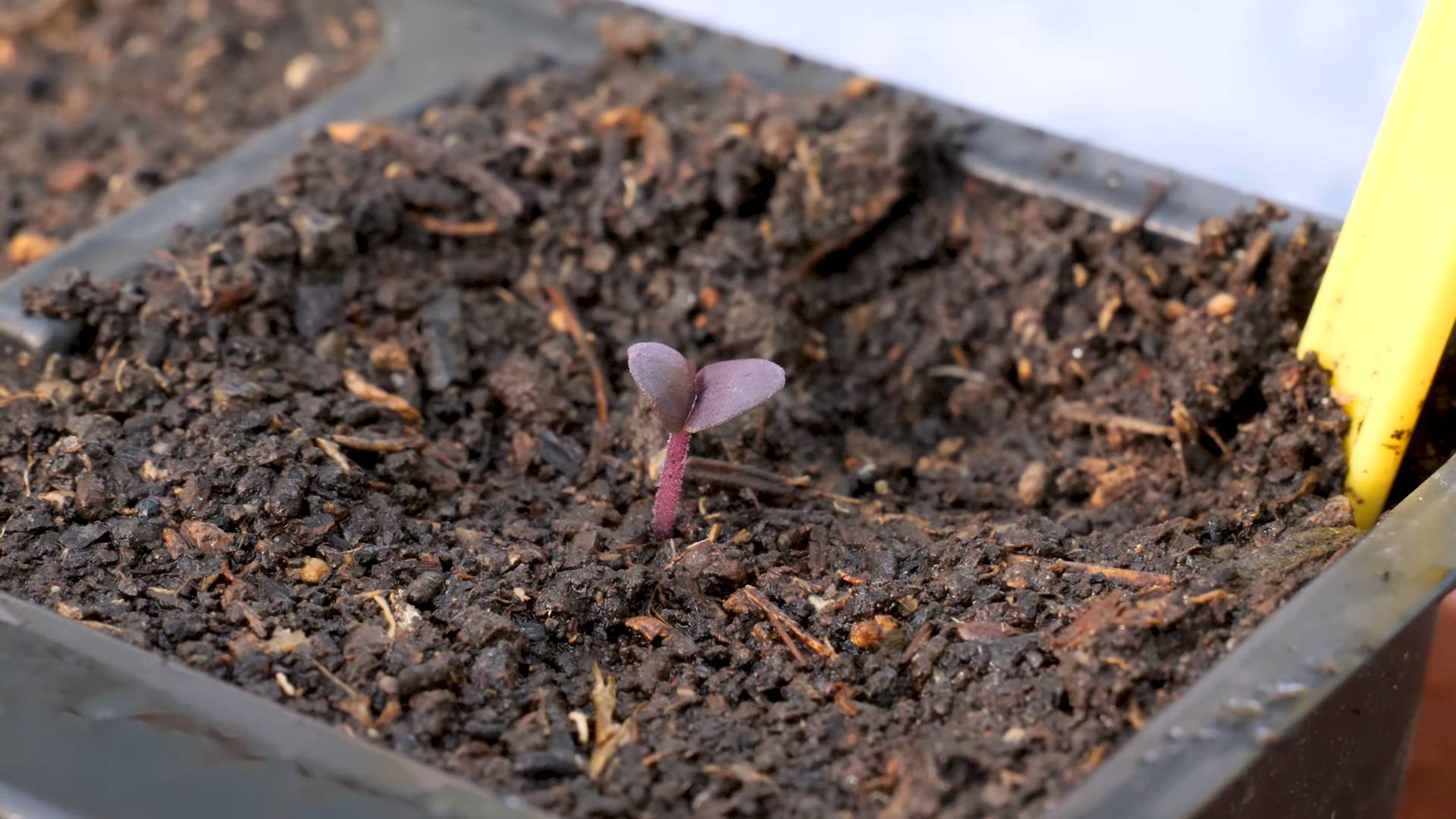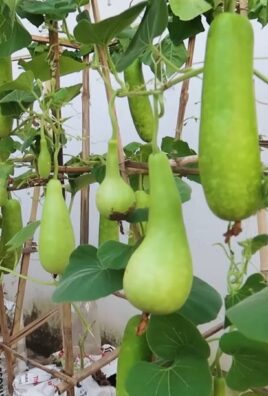Grow Purple Basil Container: Ever dreamt of adding a splash of vibrant color and aromatic flavor to your kitchen, all while flexing your green thumb? I know I have! Forget those bland, store-bought herbs – we’re diving headfirst into the wonderful world of growing your own purple basil, right in a container!
Basil, in general, boasts a rich history, dating back thousands of years. It was revered in ancient cultures for its medicinal properties and even considered sacred in some traditions. But purple basil? It’s a modern twist on a classic, offering not only the familiar basil taste but also a stunning visual appeal. Think of it as the rockstar of the herb garden!
Why should you bother with this DIY project? Well, for starters, fresh herbs elevate any dish from ordinary to extraordinary. But beyond the culinary benefits, growing your own purple basil container is incredibly rewarding. It’s a fantastic stress reliever, a fun activity for the whole family, and a sustainable way to enjoy fresh ingredients. Plus, imagine the envy of your neighbors when they see your thriving, purple-hued basil plant! This guide will give you all the tricks and hacks you need to successfully grow purple basil container, even if you’ve never gardened before. Let’s get started!

Growing Vibrant Purple Basil in Containers: A DIY Guide
Hey there, fellow plant enthusiasts! I’m so excited to share my experience and tips on growing gorgeous purple basil in containers. It’s easier than you might think, and the results are stunning – both visually and culinarily! Purple basil adds a unique flavor and a pop of color to any dish, and having it readily available on your patio or balcony is a total game-changer. Let’s dive in!
Choosing the Right Purple Basil Variety
First things first, let’s talk about varieties. Not all purple basil is created equal! Here are a few popular options, each with its own unique characteristics:
* ‘Dark Opal’: This is probably the most well-known purple basil. It has a deep, almost black-purple color and a strong, slightly spicy flavor. It’s a reliable grower and a great choice for beginners.
* ‘Purple Ruffles’: As the name suggests, this variety has beautifully ruffled leaves with a vibrant purple hue. It’s a bit more ornamental than ‘Dark Opal’ but still offers a delicious basil flavor.
* ‘Red Rubin’: This variety boasts a slightly lighter, reddish-purple color. It has a milder flavor compared to ‘Dark Opal’ and is often preferred for salads and garnishes.
* ‘Amethyst’: This is a newer variety that is known for its vibrant purple color and resistance to bolting (going to seed). It’s a great option for warmer climates.
I personally love ‘Dark Opal’ for its intense color and robust flavor, but feel free to experiment and find the variety that best suits your taste and growing conditions.
Preparing Your Container and Soil
Okay, now that we’ve chosen our basil variety, let’s get our container ready. This is a crucial step for healthy basil growth.
* Container Size: Choose a container that is at least 12 inches in diameter and 12 inches deep. Basil needs room for its roots to grow. A larger container is always better, as it will hold more moisture and nutrients.
* Drainage: Make sure your container has drainage holes! Basil hates sitting in soggy soil, which can lead to root rot. If your container doesn’t have drainage holes, you can drill some yourself.
* Potting Mix: Use a high-quality potting mix that is well-draining and rich in organic matter. Avoid using garden soil, as it can be too heavy and compact for container gardening. I like to use a mix of potting soil, compost, and perlite for optimal drainage and aeration.
Planting Your Purple Basil
Now for the fun part – planting! You can start basil from seeds or purchase seedlings from a local nursery. I’ve done both, and both methods work well.
* Starting from Seeds: If you’re starting from seeds, sow them indoors 6-8 weeks before the last expected frost. Sow the seeds about ¼ inch deep in a seed-starting mix. Keep the soil moist and warm (around 70-75°F). Once the seedlings have a few sets of true leaves, you can transplant them into your container.
* Planting Seedlings: If you’re using seedlings, gently remove them from their nursery pots and loosen the roots slightly. Dig a hole in the potting mix that is large enough to accommodate the root ball. Place the seedling in the hole and backfill with potting mix. Water thoroughly.
Step-by-Step Planting Instructions:
1. Fill the container: Fill your chosen container with the prepared potting mix, leaving about an inch or two of space at the top.
2. Create planting holes: If planting multiple seedlings, space them about 8-12 inches apart. Dig small holes for each seedling.
3. Gently remove seedlings: Carefully remove the seedlings from their nursery containers. If the roots are tightly bound, gently loosen them with your fingers.
4. Place seedlings in holes: Place each seedling into its prepared hole, ensuring the top of the root ball is level with the surrounding soil.
5. Backfill with soil: Gently backfill the holes with potting mix, pressing lightly to secure the seedlings.
6. Water thoroughly: Water the container thoroughly until water drains from the drainage holes. This helps settle the soil and ensures the roots are well-hydrated.
7. Mulch (optional): Add a thin layer of mulch, such as straw or wood chips, around the base of the plants to help retain moisture and suppress weeds.
Caring for Your Purple Basil
Once your basil is planted, it’s time to provide it with the care it needs to thrive.
* Sunlight: Purple basil needs at least 6-8 hours of sunlight per day. Place your container in a sunny location, such as a south-facing patio or balcony.
* Watering: Water your basil regularly, especially during hot weather. The soil should be consistently moist but not soggy. Check the soil moisture by sticking your finger into the soil. If the top inch feels dry, it’s time to water.
* Fertilizing: Feed your basil with a balanced liquid fertilizer every 2-3 weeks. This will help promote healthy growth and abundant foliage.
* Pinching: Pinch off the top sets of leaves regularly to encourage bushier growth. This also prevents the plant from flowering too early, which can reduce leaf production.
* Deadheading: Remove any flowers that appear on the plant. Flowering signals the end of the plant’s life cycle, so removing the flowers will encourage it to continue producing leaves.
Harvesting Your Purple Basil
Harvesting your purple basil is the most rewarding part! You can start harvesting leaves as soon as the plant is established.
* Harvesting Technique: Use scissors or pruning shears to cut off the top sets of leaves. Avoid cutting off more than one-third of the plant at a time.
* Frequency: Harvest your basil regularly to encourage continued growth. The more you harvest, the more the plant will produce.
* Storage: Freshly harvested basil can be stored in the refrigerator for a few days. Wrap the leaves in a damp paper towel and place them in a plastic bag. You can also freeze basil leaves for longer storage.
Troubleshooting Common Problems
Even with the best care, you might encounter some problems while growing purple basil. Here are a few common issues and how to address them:
* Yellowing Leaves: Yellowing leaves can be caused by overwatering, underwatering, or nutrient deficiencies. Check the soil moisture and adjust your watering schedule accordingly. Fertilize the plant with a balanced liquid fertilizer.
* Pests: Basil can be susceptible to pests such as aphids, spider mites, and whiteflies. Inspect your plants regularly for signs of infestation. If you find pests, you can try spraying them with insecticidal soap or neem oil.
* Root Rot: Root rot is caused by overwatering and poor drainage. Make sure your container has drainage holes and that you’re not overwatering the plant. If you suspect root rot, you can try repotting the plant in fresh potting mix.
* Bolting: Bolting (going to seed) can occur when the plant is stressed or exposed to high temperatures. To prevent bolting, keep the plant well-watered and fertilized, and provide it with some shade during the hottest part of the day.
Enjoying Your Purple Basil Harvest
Now that you have a bountiful harvest of purple basil, it’s time to put it to good use! Here are a few ideas:
* Pesto: Purple basil pesto is a delicious and vibrant twist on traditional pesto.
* Salads: Add chopped purple basil to salads for a pop of color and flavor.
* Garnish: Use purple basil leaves as a garnish for soups, pasta dishes, and grilled meats.
* Infused Oil: Infuse olive oil with purple basil for a flavorful cooking oil.
* Vinegar: Infuse vinegar with purple basil for a unique salad dressing.
* Tea: Brew a refreshing cup of purple basil tea.
Growing purple basil in containers is a rewarding and enjoyable experience. With a little care and attention, you can have a beautiful and flavorful herb garden right at your fingertips. So, get out there and start growing! I promise, you won’t regret it! Happy gardening!

Conclusion
So, there you have it! Growing your own purple basil in a container isn’t just a gardening project; it’s an investment in flavor, beauty, and a touch of culinary magic right at your fingertips. We’ve walked through the simple steps, from selecting the perfect container and soil to nurturing your plant and harvesting its vibrant leaves. But why is this DIY trick a must-try?
Firstly, the flavor. Store-bought basil, even the purple variety, often lacks the intense aroma and nuanced taste of homegrown herbs. When you grow your own, you control the environment, ensuring optimal conditions for flavor development. Imagine the difference a handful of freshly picked, intensely fragrant purple basil will make in your pesto, salads, or even infused oils. It’s a game-changer!
Secondly, the visual appeal. Purple basil is stunning. Its deep, rich color adds a touch of elegance and sophistication to any dish. Forget bland garnishes; a sprig of purple basil elevates your presentation and makes your meals Instagram-worthy. Plus, the plant itself is a beautiful addition to your patio, balcony, or kitchen windowsill. It’s a living piece of art that you can also eat!
Thirdly, the satisfaction. There’s something incredibly rewarding about nurturing a plant from seed or seedling to a thriving, productive herb. It connects you to nature, reduces your reliance on store-bought produce, and gives you a sense of accomplishment. Plus, it’s a fantastic way to de-stress and unwind.
But don’t stop there! Experiment with different varieties of purple basil. ‘Dark Opal’ offers a particularly intense color, while ‘Red Rubin’ has a slightly milder flavor. Try different container sizes and materials to see what works best for your space and climate. You can even companion plant your purple basil with other herbs and vegetables, such as tomatoes, peppers, and rosemary, to create a thriving mini-garden.
Consider using different types of soil amendments to boost growth. Adding compost or worm castings can provide essential nutrients and improve drainage. You can also experiment with different watering techniques, such as bottom watering, to prevent fungal diseases.
And remember, growing purple basil in a container is a continuous learning process. Don’t be afraid to make mistakes and learn from them. The most important thing is to have fun and enjoy the journey.
We wholeheartedly encourage you to try this DIY trick and experience the joy of growing your own purple basil. It’s easier than you think, and the rewards are well worth the effort. Once you’ve harvested your first batch of fragrant leaves, we’d love to hear about your experience! Share your photos, tips, and recipes in the comments below. Let’s create a community of purple basil enthusiasts and inspire others to embrace the joys of homegrown herbs. Let us know what challenges you faced and what you did to overcome them. Your insights could be invaluable to other aspiring gardeners. So, get your hands dirty, plant some seeds, and prepare to be amazed by the beauty and flavor of your own homegrown purple basil!
Frequently Asked Questions (FAQ)
What is the best container size for growing purple basil?
The ideal container size for growing purple basil is at least 12 inches in diameter and 12 inches deep. This provides enough space for the roots to grow and allows the plant to reach its full potential. However, you can also grow purple basil in smaller containers, such as 6-inch pots, but you may need to water and fertilize them more frequently. Larger containers, like half-barrels, are also suitable and can accommodate multiple plants. The key is to ensure the container has adequate drainage holes to prevent waterlogging. Remember that the larger the container, the more soil it will hold, which means it will retain moisture for longer periods. This can be beneficial in hot climates, but it can also increase the risk of root rot in cooler, wetter climates.
What type of soil is best for purple basil?
Purple basil thrives in well-draining, fertile soil with a slightly acidic to neutral pH (around 6.0 to 7.0). A good potting mix specifically formulated for herbs or vegetables is an excellent choice. You can also create your own mix by combining equal parts of potting soil, compost, and perlite or vermiculite. Compost provides essential nutrients and improves soil structure, while perlite or vermiculite enhances drainage and aeration. Avoid using garden soil in containers, as it can become compacted and poorly drained. Consider adding a slow-release fertilizer to the soil at planting time to provide a steady supply of nutrients. You can also amend the soil with organic matter, such as aged manure or leaf mold, to improve its fertility and water-holding capacity.
How much sunlight does purple basil need?
Purple basil requires at least 6-8 hours of direct sunlight per day to thrive. Place your container in a sunny location, such as a south-facing window or a sunny patio. If you don’t have enough natural sunlight, you can supplement with grow lights. Insufficient sunlight can lead to leggy growth, pale leaves, and reduced flavor. If you live in a hot climate, provide some afternoon shade to prevent the leaves from scorching. Observe your plant closely and adjust its location as needed to ensure it receives the optimal amount of sunlight. Rotating the container regularly can also help ensure that all sides of the plant receive equal sunlight.
How often should I water my purple basil plant?
Water your purple basil plant when the top inch of soil feels dry to the touch. Avoid overwatering, as this can lead to root rot. Water deeply, until water drains out of the drainage holes. The frequency of watering will depend on the weather, the size of the container, and the type of soil. In hot, dry weather, you may need to water daily. In cooler, wetter weather, you may only need to water every few days. Check the soil moisture regularly and adjust your watering schedule accordingly. Consider using a moisture meter to accurately assess the soil moisture level.
How do I harvest purple basil?
Harvest purple basil leaves regularly to encourage bushier growth. Pinch or cut off the top sets of leaves, just above a leaf node (where leaves emerge from the stem). This will encourage the plant to branch out and produce more leaves. Avoid removing more than one-third of the plant’s leaves at a time. You can harvest leaves throughout the growing season, from early summer until the first frost. The best time to harvest is in the morning, after the dew has dried, when the leaves are at their most flavorful.
What are some common problems when growing purple basil and how do I fix them?
Some common problems when growing purple basil include pests, diseases, and nutrient deficiencies. Pests, such as aphids and spider mites, can be controlled with insecticidal soap or neem oil. Diseases, such as fungal infections, can be prevented by providing good air circulation and avoiding overwatering. Nutrient deficiencies can be addressed by fertilizing with a balanced fertilizer. Yellowing leaves can indicate a nitrogen deficiency, while stunted growth can indicate a phosphorus deficiency. Monitor your plant regularly for signs of problems and take action promptly to prevent them from escalating.
Can I grow purple basil indoors?
Yes, you can grow purple basil indoors, but you’ll need to provide it with adequate light and warmth. Place your container in a sunny south-facing window or supplement with grow lights. Maintain a consistent temperature of around 70-75°F (21-24°C). Ensure good air circulation to prevent fungal diseases. Water regularly, but avoid overwatering. Fertilize with a balanced fertilizer every few weeks. With proper care, you can enjoy fresh purple basil indoors year-round.
How do I propagate purple basil?
Purple basil can be easily propagated from stem cuttings. Take a 4-6 inch cutting from a healthy stem, just below a leaf node. Remove the lower leaves and place the cutting in a glass of water. Change the water every few days. Roots should begin to form within a week or two. Once the roots are about an inch long, you can transplant the cutting into a pot filled with well-draining potting mix. Keep the soil moist until the plant is established. You can also propagate purple basil from seeds, but it will take longer to produce a mature plant.




Leave a Comment